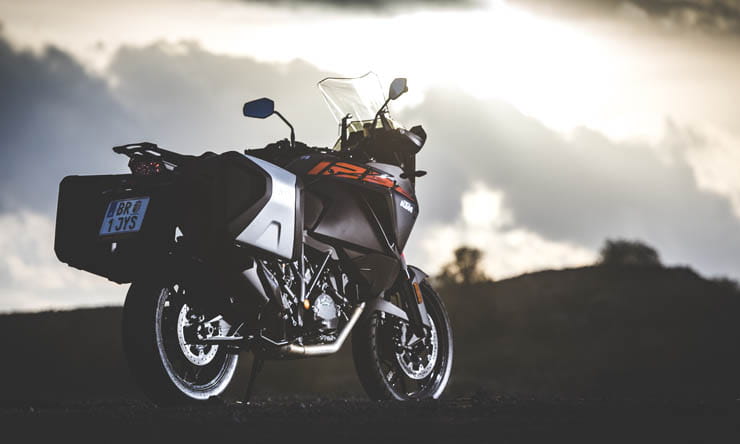Obviously there is a huge catalogue of accessories and add-ons for the 1290 Super Adventure range. As mentioned previously, KTM had installed their “Travel Pack” (available for an extra £585.40) on the bike I rode which includes a quick shifter (which works both up and down the ‘box), MSR (Motor Slip Regulation) which opens the throttle on your behalf on aggressive downshifts to prevent the rear wheel from locking, as well as hill-hold Control and something called “KTM MY RIDE” which allows you to tether your smart phone to the bike to take calls and control audio.
Is there anything which narked me about the 1290 Super Adventure S? Yes, there was, and that’s the lack of feedback when activating the bike via the ‘on’ button. There’s a delay between pressing the button and the display firing into life. This becomes confusing prompting another press of the ‘on’ button, which then turns the bike off - again with no feedback. And then the cycle continues, in an endless state of “is it on? is it off? is it even listening?”. This caught out a number of journalists as well as the KTM engineers present. With time, I’m sure they’ll work it out, and any owners will get the knack before long anyway.
Verdict
The 1290 Super Adventure S is very obviously an incredibly capable bike, and with the Travel Pack fitted for the excellent up-and-down quickshifter and Motor Slip Regulation, will leave you struggling to want for much else. About the only feature I can think of that it doesn’t have is launch control, and suffice to say, it wouldn’t see any use even if it did. The motor packs an incredible punch and the electronic sophistication will leave you wondering whether you’re riding it or just a passenger. It’s an utterly fantastic machine, capable of holding its own in twisties to transporting two people with luggage in relative luxury across continents to just popping to the shops
Anyone considering a 1290 Super Adventure S will no doubt also be looking at BMW’s R1200 GS Adventure and Ducati’s Multistrada 1200 S, and I suspect the choice will come down to a matter of personal taste as all three can be specced to near identical levels. The BMW doesn’t have cornering headlights available, and the Ducati doesn’t have an option for an up-and-down quickshifter. Some might favour the BMW for its shaft drive, and some might favour the KTM or Ducati simply for the extra grunt, choosing to look past their chain final drives. Other than that, there’s nothing else in it, except for how much damage they’ll each do to your wallet.
The 1290 Super Adventure S's price as ridden with the "Travel Pack" and touring cases comes to £15,715. The BMW R1200 GS Adventure starts at £13,500 but requires a further £2,700 throwing at it, bringing the total to £16,200, in order to get to the same specification level as the KTM - but you'll still be 35 horsepower short of the KTM and Ducati. The Ducati will set you back a whopping £15,575 but comes out of the crate at almost the same level of specification as the KTM with the "Travel Pack" fitted, requiring only the "Touring Pack" to be lifted from Ducati's accessories catalogue for a further £895, bringing the total to £16,490. So, all in all, there's perhaps £775 between the three.
So what would make me buy the KTM over the competition? The answer is simple - that motor, the brilliant 6.5” display, and the fact it's incredible value for money.
Rich Taylor





.ashx?h=444&la=en&w=740&hash=EF955B968A6E3D0223FEBB0136CA6A9DE6A72723)
.ashx?h=555&la=en&w=370&hash=08957D32D42B0F1152CB164057587E89E4383E6C)


.ashx?h=555&la=en&w=370&hash=92A1AE3E0B2A4ED5EF864919E6C66B364B3899B0)





